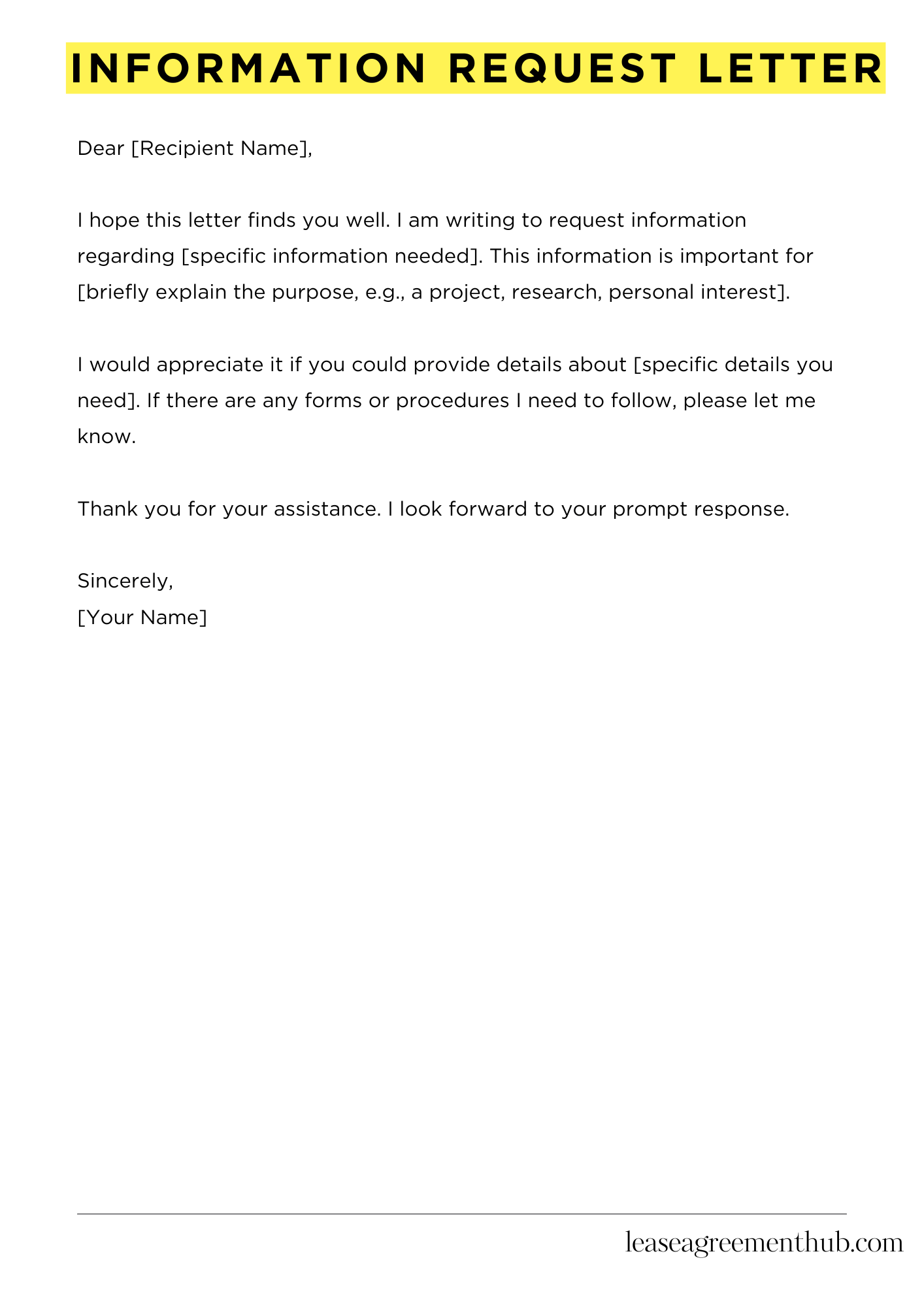An Information Request Letter is a formal document used to ask for specific information from an individual or organization. Its purpose is to clearly communicate what information is needed and why it is important. These letters are often used in business, legal, and academic contexts to obtain data or clarification on various topics.
In this article, we will provide a variety of templates and examples of Information Request Letters. These samples will help you understand how to structure your own letter. Whether you need to request information for a project, a legal matter, or personal reasons, these templates will make the writing process easier.
By using our examples, you can save time and ensure that your request is clear and professional. Each template is designed to fit different situations, so you can find the right one for your needs. With these resources, crafting your Information Request Letter will be straightforward and efficient.
Information Request Letter
[Your Name]
[Your Address]
[City, State, Zip Code]
[Email Address]
[Phone Number]
[Date]
[Recipient Name]
[Recipient Title]
[Company/Organization Name]
[Company Address]
[City, State, Zip Code]
Dear [Recipient Name],
I hope this letter finds you well. I am writing to request information regarding [specific information needed]. This information is important for [briefly explain the purpose, e.g., a project, research, personal interest].
I would appreciate it if you could provide details about [specific details you need]. If there are any forms or procedures I need to follow, please let me know.
Thank you for your assistance. I look forward to your prompt response.
Sincerely,
[Your Name]

How to Write Information Request Letter
Understanding the Purpose
Writing an information request letter is an essential skill. It allows you to seek specific details or data from individuals or organizations. Whether you need information for a project, research, or personal reasons, a well-crafted letter can increase your chances of receiving a prompt response.
Gathering Your Thoughts
Before you start writing, take a moment to clarify your needs. What information do you want? Who can provide it? Jot down your questions. This will help you stay focused and ensure that your letter is clear and concise. Remember, a clear request is more likely to get a positive reply.
Structuring Your Letter
Begin with a formal greeting. Use the recipient’s name if you know it. If not, a generic greeting like “Dear Sir or Madam” works well. Next, introduce yourself briefly. State your purpose clearly in the opening paragraph. Follow this with specific questions or information you seek. Finally, express appreciation for their time and assistance.
Maintaining a Professional Tone
Throughout your letter, keep a professional tone. Use polite language and avoid slang. Be direct but respectful. This sets a positive tone and shows that you value the recipient’s time. Proofread your letter for spelling and grammar errors. A well-polished letter reflects your seriousness and professionalism.
Closing and Follow-Up
In your closing paragraph, summarize your request and thank the recipient once again. Include your contact information, making it easy for them to respond. After sending your letter, consider following up if you don’t hear back within a reasonable time. A gentle reminder can help ensure your request is not overlooked.
Related: